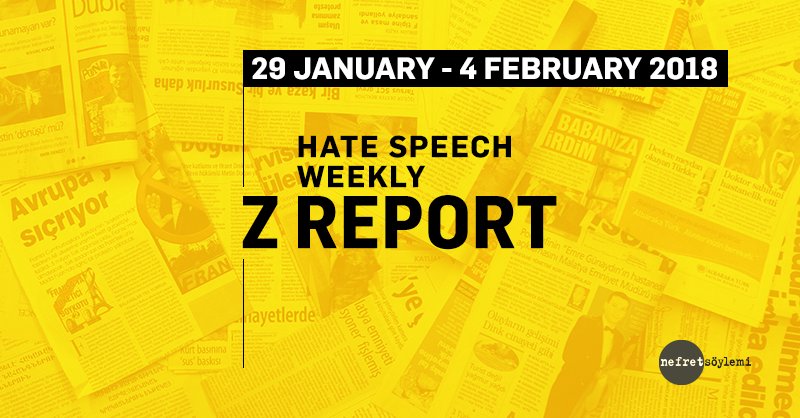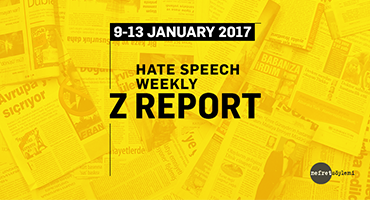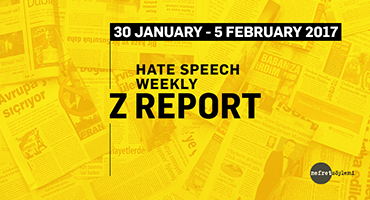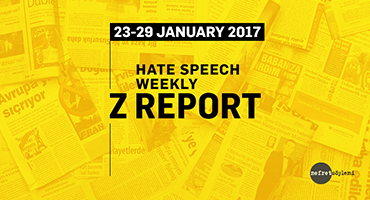Within January 29 - February 4, 2018, three articles that generate hate speech were selected. You can find these articles that contain hate speech against Syrians, Jews and Armenians as well as the analyses written about them below.1
1.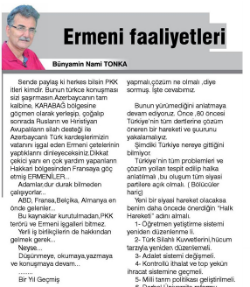
Bünyamin Nami Tonka, in his column titled “Armenian activities”, escalates prejudices against Russians and Christians with the following remarks: “Please share this so that everybody knows who those PKK dogs are. Don’t be surprised to hear that that one speaks Turkish. You will learn the doings of Armenian gangs who migrated to Karabakh which is right in the middle of Azerbaijan, reproduced and occupied the land of our Azerbaijani Turkish brothers with the support of Russians and Christians. The interesting part is this: Armenians from Hakkari who migrated to France are their chief supporter…” and “Unless we eradicate these sources, PKK terrorism and Armenian occupation won’t stop”. Tonka also portrays Armenians as enemies by associating Armenian identity with war and terrorism.
|

The article published in Gaziantep Metropol with the title “Syrian who tortured her daughter and made her beg on the streets caught” covers the incident by highlighting the national identity of the suspect. Thus, Syrian identity is associated with crime and existing prejudices are reinforced.
|
3.
The article published in Milli Gazete with the title “Jewish terrorist ran over Palestinian child” covers the incident by highlighting the national identity of the suspect. Thus, Jewish identity is associated with “terrorism” and existing prejudices against Jews are reinforced.
|
1. Within the scope of the media monitoring work focusing on hate speech, all national newspapers and around 500 local newspapers are monitored based on pre-determined keywords (e.g. Traitor, apostate, refugee, Christian, Jewish, separatist, etc.) via the media monitoring center. While the main focus has been hate speech on the basis of national, ethnic and religious identities; sexist and homophobic discourses are also examined as part of the monitoring work.

